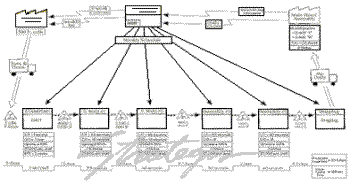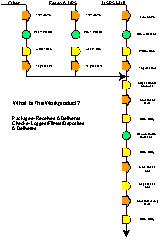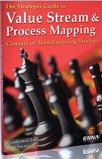Why Draw Pictures?
A factory is enormously complex. Only visuals convey enough information to understand the
pieces, relationships, hidden waste and time-domain behavior.
Visualization brings a deep understanding and major breakthroughs in productivity and other
performance. It leads to consensus on systemic problems and remedies. While finished charts
communicate information about a situation, the real value is the mapping itself. This is where
insights grow, paradigms shift and consensus builds.
Value Stream and
Process Maps take different perspectives,
but, the work they visualize is the same. Both have a place
Value Stream Maps
These show major process steps and often take a broader and wider view. They may group a wide
variety of products into a single "value stream." Here is an example:

|
 Process
Maps Process
Maps
These charts trace the sequence of events for a single
product. While they can be done at any level, the most useful charts are quite detailed. This is
important because most waste is at a micro- level.
Frank Gilbreth's symbology, which we prefer, is simple and visual. One does not need the
Rosetta Stone to decipher hieroglyphics. It dramatically displays waste. In this example, all
but the green circles are waste.
Process mapping is a great tool for
Kaizen events. Their simplicity makes them ideal
when training time is limited.
Which To Use?
The short answer is both:
 The
Strategos Guide To The
Strategos Guide To
Quarterman Lee's latest book on Value Stream
Mapping and Process Mapping goes far beyond symbols and arrows. It tells the reader
not only how to do it but what to do with it.
More Info >>
|
|





